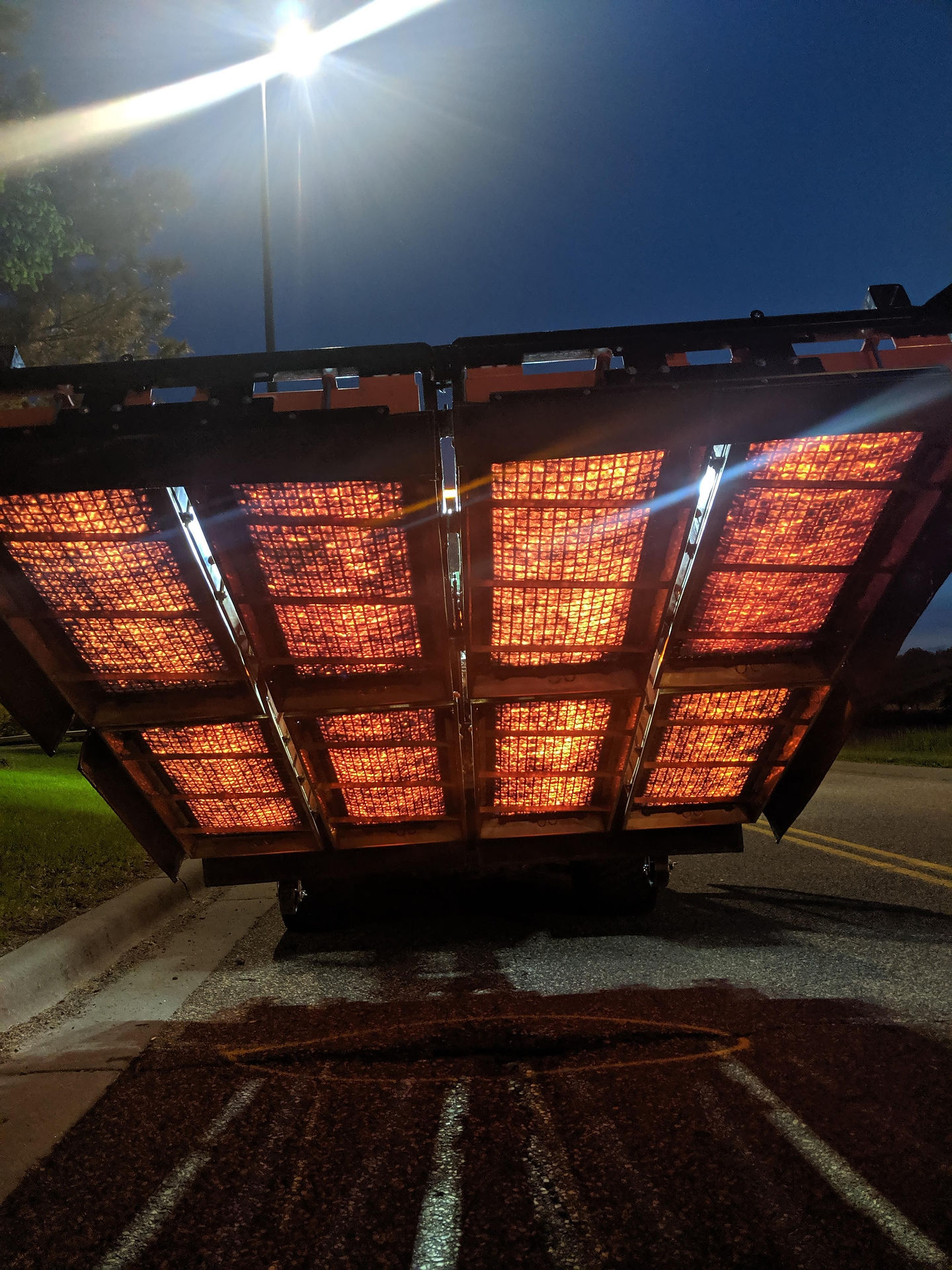Understanding FOD: The Hidden Dangers of Broken Asphalt and Pavement on Airport Runways
- cory836
- Oct 30, 2024
- 4 min read

Foreign Object Debris (FOD) is a critical concern for airports worldwide, as even small objects on a runway can have disastrous consequences for aircraft and passenger safety. One often-overlooked source of FOD is broken asphalt and pavement on airport runways, taxiways, and aprons. Small fragments of asphalt can cause extensive and costly damage to aircraft engines, tires, and other components, not to mention the potential risk to human lives. In this blog, we’ll explore the impact of FOD from broken pavement, its root causes, and how infrared asphalt repair can offer a faster, safer, and more cost-effective solution to prevent these risks.
What Is FOD and Why Is It So Dangerous?
Foreign Object Debris (FOD) refers to any unwanted object in an airport's operational areas that could harm aircraft. This debris can include anything from rocks, metal, and loose equipment to asphalt chunks and small particles from damaged runway surfaces. When even a small piece of debris is sucked into an aircraft engine or gets lodged in landing gear, the damage can be extensive and costly. For example:
Engine Damage: Tiny fragments of broken asphalt can enter jet engines, leading to significant damage to the engine’s internal components. A single small piece can cause millions in damage and hours of costly downtime for the affected aircraft.
Tire Damage: Aircraft tires are durable but sensitive to sharp or hard debris, which can cause punctures, blowouts, or tread damage. Damaged tires may require immediate replacement or repair, leading to delays and additional costs.
Flight Delays and Cancellations: FOD incidents often result in immediate delays and can even lead to canceled flights. These disruptions create additional costs for airlines and reduce overall airport efficiency.
The Role of Broken Asphalt and Pavement in FOD
Runway, taxiway, and apron surfaces take constant wear from heavy loads, extreme weather, and routine maintenance operations. Over time, these conditions lead to cracks, potholes, and other types of deterioration in asphalt and concrete surfaces. Left unchecked, these minor imperfections grow and break apart, creating loose fragments that become FOD.
Several factors can accelerate the breakdown of airport pavement:
Frequent Temperature Fluctuations: Thermal expansion and contraction from hot and cold cycles lead to cracking and breakage over time.
Heavy Aircraft Loads: Runways endure massive loads from takeoff and landing, which places a constant strain on the pavement structure.
Water Infiltration: Moisture seeps into cracks, freezes, and expands, widening the gaps and breaking up surface material, especially in colder climates.
Why Infrared Asphalt Repair Is Ideal for Airport FOD Prevention
Infrared asphalt repair has proven to be one an effective method for addressing minor asphalt issues before they lead to serious FOD risks. Unlike traditional asphalt repair methods, which can be labor-intensive and require heavy machinery, infrared repair offers several key benefits:
Quick Turnaround: Infrared repair can typically be completed in minutes rather than hours, making it ideal for airports where runway downtime must be minimized.
High-Quality Bond: The infrared process heats the damaged asphalt, allowing new asphalt to fuse seamlessly with the existing surface. This results in a smooth, durable patch that won’t create additional FOD.
Environmentally Friendly: Infrared repair reuses existing materials, minimizing waste and reducing the need for new asphalt production. This aligns with the sustainable initiatives of many airports today.
Cost-Effective Solution: By preventing larger cracks and potholes from forming, infrared repair reduces the need for extensive, costly repairs. This solution is particularly valuable for airport authorities looking to manage budgets without compromising on safety.
Real-Life Impacts: When FOD Prevention Fails
There have been numerous cases where FOD, including broken asphalt, has caused significant issues in aviation:
In 2000, the Concorde disaster was partly due to a piece of metal left on the runway, which burst a tire and led to catastrophic engine failure. Although not asphalt, this incident shows how small debris can cause devastating results.
In 2008, a major airport in the U.S. reported over 600 cases of FOD in a single year, with the resulting damage estimated at over $12 million. Some of these incidents involved broken runway pavement and cracks that went unnoticed until after causing damage.
Proactive Maintenance and Safety
To mitigate FOD risks, airports must take a proactive approach to runway maintenance. Regular inspections, quick repair options, and advanced technology all contribute to keeping airports safe for aircraft operations. Airport authorities can schedule routine inspections to identify small cracks and imperfections early on, and have infrared repair equipment readily available for rapid repair when needed.
Conclusion: A Smart Solution for Safe Runways
Asphalt deterioration on runways is not only a costly issue but a safety risk that airports cannot ignore. The introduction of infrared asphalt repair allows airports to address FOD at its source, reducing the likelihood of severe damage to aircraft and helping maintain efficient operations. By prioritizing high-quality, quick repairs, airport authorities can ensure that their runways remain clear of dangerous debris, ultimately protecting passengers, crew, and costly aviation assets.
For more information on how infrared technology can help your airport reduce FOD risks, contact us today!.









Comments